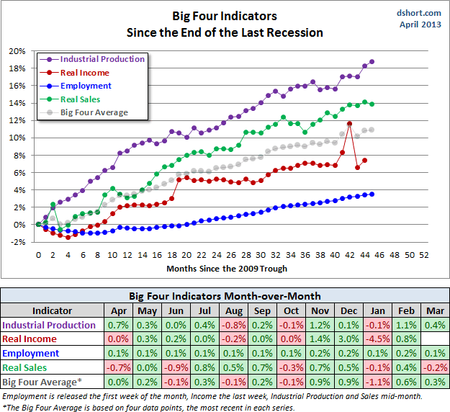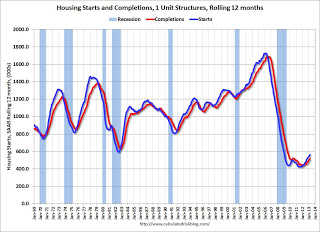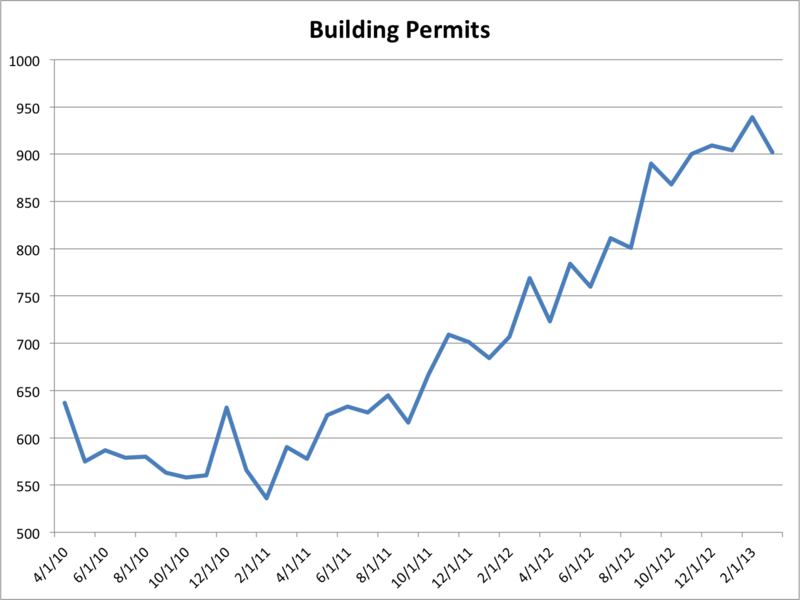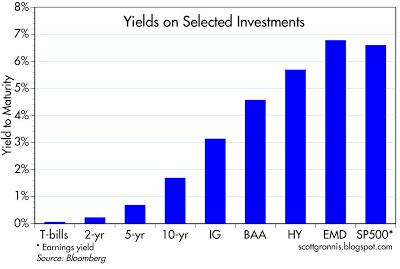The daily news from financial markets is often merely a footnote to events. Last week this was truer than ever.
If you are a market professional, it is your job to consider the effect of any event. The individual investor should have a different attitude.
My forecast for last week – that the market would focus on earnings – was very wrong. The "Boston effect" was obvious on Monday and had a continued presence throughout the week. This has an effect for chart watchers.
The coming week will provide more reports on earnings, as well as a time for reflection and analysis. So far, the signals have been mixed.
I have some thoughts on how to cope with this which I'll report in the conclusion. First, let us do our regular update of last week's news and data.
Background on "Weighing the Week Ahead"
There are many good lists of upcoming events. One source I regularly follow is the weekly calendar from Investing.com. For best results you need to select the date range from the calendar displayed on the site. You will be rewarded with a comprehensive list of data and events from all over the world. It takes a little practice, but it is worth it.
In contrast, I highlight a smaller group of events. My theme is an expert guess about what we will be watching on TV and reading in the mainstream media. It is a focus on what I think is important for my trading and client portfolios.
This is unlike my other articles, where I develop a focused, logical argument with supporting data on a single theme. Here I am simply sharing my conclusions. Sometimes these are topics that I have already written about, and others are on my agenda. I am putting the news in context.
Readers often disagree with my conclusions. Do not be bashful. Join in and comment about what we should expect in the days ahead. This weekly piece emphasizes my opinions about what is really important and how to put the news in context. I have had great success with my approach, but feel free to disagree. That is what makes a market!
Last Week's Data
Each week I break down events into good and bad. Often there is "ugly" and on rare occasions something really good. My working definition of "good" has two components:
- The news is market-friendly. Our personal policy preferences are not relevant for this test. And especially -- no politics.
- It is better than expectations.
This was a mixed week for news:
- Inflation is tame as measured by the CPI monthly decline of 0.2% and the mild year-over-year increase of 1.5%. Former Dallas Fed President Bob McTeer debunks those who have been predicting for several years that inflation is "right around the corner." The Fed is trying to create inflation, but not succeeding. McTeer suggests that this is a reason behind the decline in gold prices. Here is his take on "money printing:"
According to the Fed's H.6 series on the money stock, M2 growth was 6.8% over the past 12 months, 5.7% (annual rate) over the past 6 months, and only 1.7% over the past 3 months. This deceleration in money growth coincides with the Fed's new round of purchases and balance sheet expansion under QE3. - Fuel price declines are helping real wages. See the fine analysis and helpful charts at The Bonddad Blog. See also the supply and demand analysis at BreakingViews by Christopher Swann and Kevin Allison. They suggest that prices might remain low even as growth improves.
- Initial jobless claims were in line with expectations, confirming the return to the expected range. It appears that seasonal effects were an influence, as we noted last week.
- Industrial production added a second strong month, increasing 0.4%. Instead of focusing on this indicator alone, I suggest that readers check out Doug Short's Big Four indicators followed by the NBER's official recession dating. There is a laggard, but the general picture supports continuing modest growth.

- The Fed Beige Book provided evidence of continuing modest economic growth, consistent with the bulk of other economic evidence.
- Housing starts show a dramatic increase of 46.7%, year over year. Single-family starts were up 28.7%. The go-to source on housing, Bill McBride of Calculated Risk, notes that the rate is still low, with another 50% year in prospect. He also explains that single family starts are the best leading indicator for the economy. This is an important article. The many economic skeptics should give this due consideration. Here is a key chart:

- Prof. Shiller –drum roll – sees opportunity in housing. (Via Calculated Risk).
The important economic news was mostly negative this week.
- Chances are fading for bipartisan tax reform. (Via The Hill).
- Leading Economic Indicators faded according to the Conference Board index, dropping to -0.1. Steven Hansen of Global Economic Intersection does a comprehensive job of analyzing this indicator. He is skeptical of the gyrations in a single month. See the entire article for a careful analysis of historical results, the index components, and some helpful charts. Here is a good sample:

- Building Permits have been weak. Regular readers know that I take the permit data seriously. In this week's good news I highlighted Calculated Risk. The bad housing news argument is made at Business Insider. Here is a key chart:

- The Revenue Beat Rate has been very poor. This earnings season has been OK on the bottom line (beating reduced estimates) but very weak on revenue. Bellwether IBM was a case in point. For many this means that the earnings cannot be sustained. For others it shows effective cost-cutting. Regardless of your interpretation, the market does not like it. Here is the summary from Bespoke:

The Ugly
Boston -- the attack and also the effort to politicize by many. The reaction of medical personnel, investigators, and the people of Boston was first-rate. At some point we can consider the long-term implications of what happened. This was part of the Sunday morning talk shows, which I always watch. There are some implications to consider, but it is too soon for me.
The Silver Bullet
I occasionally give the Silver Bullet award to someone who takes up an unpopular or thankless cause, doing the real work to demonstrate the facts. Think of the Lone Ranger.
This week's award goes to Mike Konczal for breaking the story on the Rogoff and Reinhart errors. I also want to recognize the research team from U Mass – Amherst (Thomas Herndon, Michael Ash, and Robert Pollin). One of the points I tried to make at the Kauffman Conference was the need for leading financial bloggers to discover important academic findings and to explain the consequences to non-economists. Mike has done exactly that. Many others joined in with helpful posts. More on that in a future installment.
The Rogoff-Reinhart issue is not just a small error, as Mike makes clear in his excellent post. The reliance on this research finding has influenced government policy and also individual investor decisions. It takes both skill and courage to take on the prevailing wisdom.
This was a powerful story that was probably lost on many individual investors because of the dramatic events from Boston. I will revisit the theme, but the recognition is due right now. Anyone who thinks that there is a magic 90% debt to GDP trigger point should carefully read Mike's article.
The Indicator Snapshot
It is important to keep the current news in perspective. My weekly snapshot includes the most important summary indicators:
- The St. Louis Financial Stress Index.
- The key measures from our "Felix" ETF model.
- An updated analysis of recession probability.
Anyone who has followed these objective indicators over the last two years has had a significant advantage in trading and investing. Each has contributed to the result. Here is how:
The St. Louis Financial Stress Index
The SLFSI reports with a one-week lag. This means that the reported values do not include last week's market action. The SLFSI has moved a lot lower, and is now out of the trigger range of my pre-determined risk alarm. This is an excellent tool for managing risk objectively, and it has suggested the need for more caution. Before implementing this indicator our team did extensive research, discovering a "warning range" that deserves respect. We identified a reading of 1.1 or higher as a place to consider reducing positions.
The SLFSI is not a market-timing tool, since it does not attempt to predict how people will interpret events. It uses data, mostly from credit markets, to reach an objective risk assessment. The biggest profits come from going all-in when risk is high on this indicator, but so do the biggest losses.
Recession Forecasting
The C-Score is a weekly interpretation of the best recession indicator I found, Bob Dieli's "aggregate spread." I have now added a series of videos, where Dr. Dieli explains the rationale for his indicator and how it applied in each recession since the 50's. I have organized this so that you can pick a particular recession and see the discussion for that case. Those who are skeptics about the method should start by reviewing the video for that recession. Anyone who spends some time with this will learn a great deal about the history of recessions from a veteran observer.
I have promised another installment on how I use Bob's information to improve investing. I hope to have that soon. Anyone watching the videos will quickly learn that the aggregate spread (and the C Score) provides an early warning. Bob also has a collection of coincident indicators and is always questioning his own methods.
I feature RecessionAlert, which combines a variety of different methods, including the ECRI, in developing a Super Index. They offer a free sample report. Anyone following them over the last year would have had useful and profitable guidance on the economy. Dwaine also does a useful world economic review with a country-by-country analysis of the improving global recession status. Essential reading!
Georg Vrba is a great "quant guy" with an excellent variety of useful tools, some available via a free subscription. His latest update includes forecasting models for stocks, bonds, precious metals, as well as the odds on a recession. Silver now has a "buy" signal.
Doug Short has excellent continuing coverage of the ECRI recession prediction, now eighteen months old. Doug updates all of the official indicators used by the NBER and also has a helpful list of articles about recession forecasting. Doug also continues to refresh the best chart update of the major indicators used by the NBER in recession dating --- now reflecting the most recent data. Here is Doug's latest opinion on the ECRI forecast:
Ultimately my opinion remains unchanged from my position in recent weeks: The ECRI's current position is best understood as an effort to salvage credibility in hopes that major revisions to the key economic indicators -- notably the July annual revisions to GDP -- will validate their early recession call.
Readers might also want to review my Recession Resource Page, which explains many of the concepts people get wrong. 
Our "Felix" model is the basis for our "official" vote in the weekly Ticker Sense Blogger Sentiment Poll. We have a long public record for these positions. About a month ago we switched to a bullish position. These are one-month forecasts for the poll, but Felix has a three-week horizon. Felix's ratings stabilized at a low level, and have now moved into the neutral range. The penalty box percentage measures our confidence in the forecast. A high rating means that most ETFs are in the penalty box, so we have less confidence in the overall ratings. That measure remains elevated, so we have less confidence in short-term trading.
For trading accounts we are still fully invested in Felix's recommended sectors, but the choices are quite conservative. This situation is re-evaluated daily. If we no longer have three attractive sectors, we can move to bonds, to cash, or even go short via inverse ETFs.
[For more on the penalty box see this article. For more on the system ratings, you can write to etf at newarc dot com for our free report package or to be added to the (free) weekly ETF email list. You can also write personally to me with questions or comments, and I'll do my best to answer.]
The Week Ahead
The coming week includes plenty of news from many sources.
The "A List" includes the following:
- Initial jobless claims (Th). Employment will continue as the focal point in evaluating the economy, and this is the most responsive indicator. Last week's stability (after two weeks of seasonal gyrations) was encouraging, but we are all watching.
- New Home Sales (T). Housing activity is the best hope for continuing economic rebound.
- Advance GDP for Q1 (F). This is "old news" in a sense, but perhaps it will put paid to the bogus recession forecasts. Most of us are now focused on Q2.
The "B List" includes the following:
- Durable goods (W). Continuing interest as a component of GDP.
- Michigan sentiment final (F). Normally I would not mention the revisions, but last month there was a big jump from the preliminary. This month there was another weak preliminary. There will be extra attention.
And most importantly of all: earnings, earnings, earnings.
Trading Time Frame
This is one of the most dramatic weeks for a trading/investing time-frame distinction. Felix has moved to a neutral posture, with ratings stabilizing around zero. There are a few solid candidates to buy, although the preferred sectors are pretty conservative. Felix is still playing the long side, but doing so via dividend stocks, consumer staples, real estate, and Japan. It is something like a bond substitute, and it is working -- -at least for the moment.
Investor Time Frame
Each week I think about the market from the perspective of different participants. The right move often depends upon your time frame and risk tolerance.
This week reflects a sharp divergence.
The traders are mostly like Felix – one foot out the door, warning of a correction, conservative holdings, and emphasizing what has been working.
The investors have a very different approach. I wanted to highlight this week's Barron's. This is often a source of bearish commentary, but we should remain open to all viewpoints. This week's issue features their semi-annual poll of money managers and several other articles with a common theme:
- Dividend stocks are overvalued.
- Bonds are overvalued.
- Headline fears are exaggerated.
- The most attractive sectors include cyclicals, financials, and technology. Maybe some health care.
- It is only the fifth or sixth inning of the recovery.
My own viewpoint is that it is the third or fourth inning. We had a fast descent and are now experiencing a slow rebound.
This is extremely difficult for the average individual investor to see. In addition to picking up a copy of Barron's this week, please read Abnormal Returns on the subject of interpreting news:
One of the reasons we investors consume the news is that we think it will provide us more information with which to make better, more profitable decisions. We think this incremental information will somehow give us an "edge." The challenge with this thinking is that more information may increase the confidence in our decisions but it does little to increase their accuracy.
This is very important for the individual investor, as is the link to Josh Brown's post on how he parses the news.
The news flow is a trap for the average investor, who is tempted to buy high and sell low.
Buying in times of fear is easy to say, but so difficult to implement. Almost everyone I talk with wants to out-guess the market. The problem? Value is more readily determined than price! Individual investors too frequently try to imitate traders, guessing whether to be "all in" or "all out."
We have collected some of our recent recommendations in a new investor resource page -- a starting point for the long-term investor. (Comments and suggestions welcome. I am trying to be helpful and I love feedback).
Final Thought
Interpreting mixed data is a special challenge. This is especially true when we consider both economic and market data.
Many technical analysts see last week's data as signaling a tired market and maybe the start of the long-awaited correction. The timing of a correction –both start and finish – is difficult to forecast, as is the possible depth.
From the fundamental perspective there has been a long period of below-trend economic growth with a Fed commitment to act aggressively until things improve. This has supported a continuing growth in corporate earnings.
Scott Grannis provides this chart of returns from various investment choices: 
He concludes that the "market is very worried about recession" since that is the only justification for such a wide yield disparity. This is the reason that I have highlighted important recession forecasting techniques – those that have accurately predicted the continuing expansion.
The next step will be an increase in inflation – which the Fed is actively seeking – and interest rates. This will be bad news for holders of bond mutual funds and the currently popular grandma stocks.
